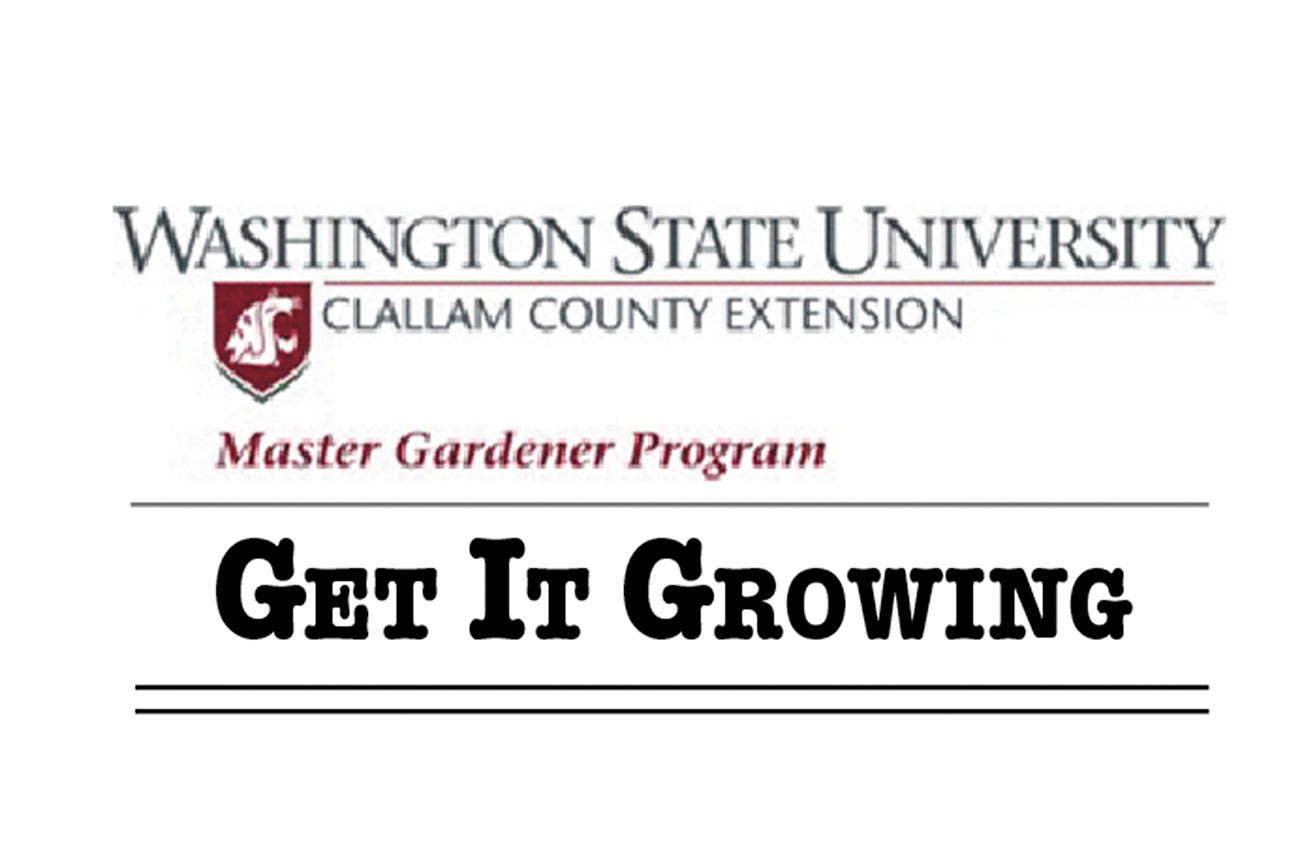Garden walk
From 10-11:30 a.m. on Saturday, Aug. 10, join Clallam County Master Gardeners for a walk at the 5th Street Community Garden in Port Angeles. These educational events focus on gardening techniques, vegetables that do well in our climate and chores that need to be done in the vegetable garden. Walks occur rain or shine. For more information, call 360-565-2679.
August is typically the hottest, driest month of the year, so keep your garden well-watered. To minimize water loss from evaporation water early in the morning or late in the afternoon. Use soaker hoses and drip irrigation to keep leaves dry and prevent fungal diseases. Water plants in containers as often as twice a day, if needed, and fertilize them regularly because frequent watering leaches nutrients.
Don’t let the weeds get ahead of you. Under dry conditions, hoeing works well; many weeds when sliced off just below the soil line promptly shrivel up and die. If you are unable to remove weeds, at least remove the flowers before they go to seed to prevent their spread.
Patrol for diseases, insects and other pests and consult local Master Gardeners for ways to control them. Diagnostic Plant Clinics are held on Mondays from 9:30 a.m.-12:30 p.m. at the Clallam County Courthouse in Port Angeles and on Saturdays from 9:30 a.m.-12:30 p.m. at the Master Gardener Woodcock Demonstration Garden in Sequim.
Vegetable garden
Many crops planted in early spring have stopped producing and will soon bolt or die. Pull out finished crops and replenish the soil with compost.
Consider planting fall/winter vegetables in empty garden space. Arugula, Asian greens, beets, kohlrabi, lettuce, bunching onions, radishes and spinach can be directly seeded into the garden. Use starts for slow growing plants such as broccoli, cabbage, cauliflower, kale, leeks, overwintering onions and Swiss chard.
Harvest garlic when most (but not all) of the leaves have turned brown. Carefully lift the bulbs from the soil with a spade or garden fork. Gently brush off any soil, and let them cure in a dry, shady spot for about two weeks. When wrappers are dry and papery, trim off roots and leaves. Remove only the dirtiest, outermost wrappers.
Harvest onions when the tops of about half have fallen over. Brush off the dirt and leave them in a warm, dry place for about a week. When the necks are tight and the stems contain no moisture, trim the roots and cutback the leaves. Use onions that have been damaged or have green necks immediately.
To hasten ripening of tomatoes, stop fertilizing the plants (if you have been fertilizing them) and reduce irrigation. August is also a good time to start removing young fruit and blossoms as they appear because they will not have a chance to mature before the season ends and will delay ripening of the rest of the crop.
Fruit trees
Harvest the fruits of your labors! Harvest pears when full-sized but hard (before they ripen). Harvest other fruit when ripe: apples are ripe when seeds turn brown; plums, when fruit is slightly soft; and blueberries, 2-3 days after the entire berry turns blue.
Berries
Clean up and fertilize June-bearing strawberries (not day neutral or ever-bearing varieties). It is too late for an aggressive renovation, but you can remove weak, old and crowded plants and narrow rows to 8-12 inches. June-bearing strawberries put on a multitude of runners (baby plants) at this time. Before they root, move the runners into the row, filling in spaces between the mother plants. To encourage rooting, pen the baby plant to the ground with a hairpin or u-shaped piece of wire.
Prune out second-year raspberry and blackberry canes (canes that just fruited) after harvest. Trellis the first-year canes.
Make sure all berries get 1 to 2 inches of water weekly. Most berries set buds for next year’s fruit as days get shorter and temperatures cool.
This calendar is for guidance only. Growing conditions vary from garden to garden and from spot to spot within the same garden. Please adjust your gardening activities to fit with local conditions.
Happy Gardening!
Jeanette Stehr-Green is a WSU-certified Clallam County Master Gardener.



